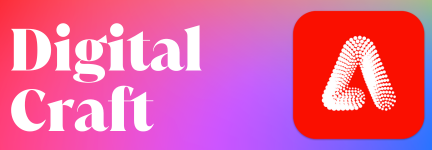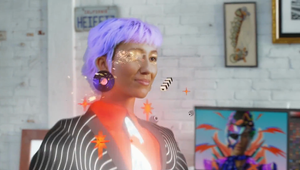
Meet the Technologists: Jean-Baptiste Burdin

Adobe XD is a proud supporter of LBB. Over the upcoming months, as part of the sponsorship of the Digital Craft content channel, we will be spending time with some of the most innovative and creative minds in the industry.
In the latest edition of Digital Craft, we sit down with Jean-Baptiste Burdin, executive creative director at Razorfish France. Fuelled by a wealth of experience as creative director for agency behemoth, Publicis, his contributions to the creative industry traverse every aspect of advertising and experience design. Although the technological landscape and his role within it remains in a perpetual state of reinvention, Jean-Baptiste points out that his primary mission - to inspire, identify, and nurture the best ideas within creative teams - remains to be the same.
In conversation with LBB’s April Summers, the innovative ECD touches on how Razorfish has been leveraging AI in secure environments, how he bridges the talents of the company's dynamic workforce to deliver innovative solutions to clients, and how technology continues to be an instrumental tool for crafting powerful brand experiences.
LBB> Can you remember your first experience with technology as a creative director? How has the industry changed since then?
JB> Throughout my career, technology has consistently served as a creative instrument for expanding brand expression. In the past, tools like 'Flash' were pivotal for experimentation and creative freedom, facilitating collaboration between developers and creatives. The industry has indeed evolved since then. The advancement of smartphones and changing user habits have transformed the role of digital storytelling, shifting it from an isolated experience to a spectrum of solutions addressing the fragmentation of attention. Nowadays, users directly engage with technologies through various channels such as social content, digital platforms, experiential, and more.
LBB> Tell us about your work with Razorfish. What are you most proud of accomplishing whilst working there?
JB> Razorfish is a brand dedicated to crafting powerful brand experiences in the digital realm. We boast a diverse range of creative talents, spanning from product designers to content creators. The true magic happens when we bring together these specific talents and skills to design and actualise our envisioned creations. Personally, I take great pride in the experience we crafted to celebrate Renault's automotive heritage, aptly named 'The Original Museum & Store.' It encapsulates our passion for digital storytelling and innovation.

LBB> How would you summarise the relationship between technology and creativity at Razorfish?
JB> First and foremost, we boast an equal number of creatives and developers at Razorfish, a testament to the unique blend of talents we house. My role is to bridge these talents and deliver innovative solutions to our clients. We offer them three primary types of experiences: Products, Stories, and Spaces. Through each of these offerings, our goal is to find the intersection of creativity and technology. While the idea always serves as our starting point, our agency's 'geek' culture, a fusion of creatives, UX experts, and developers, ensures we're never creatively isolated. This enables us to leverage technology thoughtfully, understanding its strengths and limitations, and discerning how best to enhance the narrative. In essence, Razorfish's strength lies in its 'crea-tech' culture, an integral part of our ethos... and culture, as we know, isn't something that can be simply decreed.
LBB> Has tech and creativity helped to guide Razorfish through periods of social and economic change in any way?
JB> In a certain sense, yes. Creativity has adapted to the changing landscape of usage, technologies, and algorithms. Our mission has always been to capture attention and cater to user needs. It's crucial to truly understand and grasp these needs, comprehend their behaviours, and be able to adjust our creations within more intricate journeys, covering more touchpoints, often with more constrained budgets. Hence the importance of thoroughly understanding our playing field in order to remain relevant!
LBB> How has the role of a creative director evolved over the years? Have things changed greatly as a result of technological advancements or do core principles remain the same?
JB> I believe the primary mission remains exactly the same: to inspire, identify, and nurture the best ideas within creative teams. What has changed is the environment in which they flourish, such as social platforms or gaming. It also involves the missions of creative talents who now must navigate within larger brand ecosystems, or even conceive strategies in collaboration with content creators or creative technologists. There are also new tools, like AI, that expand the possibilities of creative projection and production. This is what makes this profession so exhilarating for me. Although the essence of the job remains constant, it is in a perpetual state of reinvention. The key is to remain capable of anticipating how.
LBB> How do you ensure high standards of creativity are upheld as speed and efficiency are increasingly made the priority?
JB> It remains a daily battle, but deep down, everyone knows that it's always the extra 10% of effort that makes the difference. I believe the best fuel for achieving this is to work with passionate individuals. We can get organised, implement quality processes, set up safeguards for control, but the reality is that nothing replaces the extra touch of talented individuals who are deeply passionate about what they do. Recruiting and keeping them happy in their work is therefore an absolute priority for delivering excellence.
LBB> How have you observed generative AI revolutionising the industry and, more specifically, the way you work?
JB> We are indeed on the cusp of a revolution, and we're beginning to see the initial signs. This revolution encompasses not only content production but also a complete transformation of our models. This doesn't necessarily imply that everything will be generative, but rather that most ideas and content, whether they're in audio, video, or CGI form, will be remixed by AI, becoming intricately intertwined. This shift is starting to impact our workflow, compelling us to take the lead, not merely adapt to these changes, but to harness them. Consequently, we've been equipping ourselves with AI in secure environments over the past few months, and we're providing training for our collaborators in its use.
LBB> What are your thoughts on its potential implications for creativity in advertising?
JB> What's fascinating about AI is that it opens up an entirely new realm of possibilities in terms of creativity. Suddenly, producing a video game becomes accessible. Creating high-quality content for social media becomes easy. Personalising an entire campaign for specific regions, targets, or segments becomes ”automatisable”. Allowing brand fans or creators to co-create with it becomes swift. Imagining experiences guided by conversation without having to create decision tree-based rules becomes playful. I believe we're going to be amazed at how creative people can become, assisted by AI.
LBB> How do you stay on top of the fast-moving world of creative tech?
JB> Keeping pace can indeed be a bit dizzying. There are so many creative tech exploration frontiers that the industry is offering right now, so it's essential to stay curious and get organised. At Razorfish, we've chosen to prioritise certain trends that seem significant. We've created dedicated task forces with the aim of tracking, testing, and deploying these technologies through real projects to apply them tangibly. Last year, our web3 team allowed us to bring a project to life for Nissan, centred around NFT cards for betting on Formula E races called Booster. Recently, our AI experts enabled us to launch a conversational assistant to facilitate product discovery and comparison on a client e-commerce website. However, playing with technologies must also remind us of our responsibility as designers: to create value, yes, but with minimal energy consumption.

LBB> Outside of the 9-5 grind, what areas of digital craft excite and interest you the most?
JB> My range of interests is broad, but I would say that generative art excites me immensely. I appreciate the role that randomness plays in creation, and newer generations of artists like Refik Anadol enable the visual expression of truly organic experiences, where the work literally comes alive. But regardless of the medium - be it algorithmic, analogue, musical, or simply natural through the laws of earthly physics - what is often alive is what inspires and moves us.















